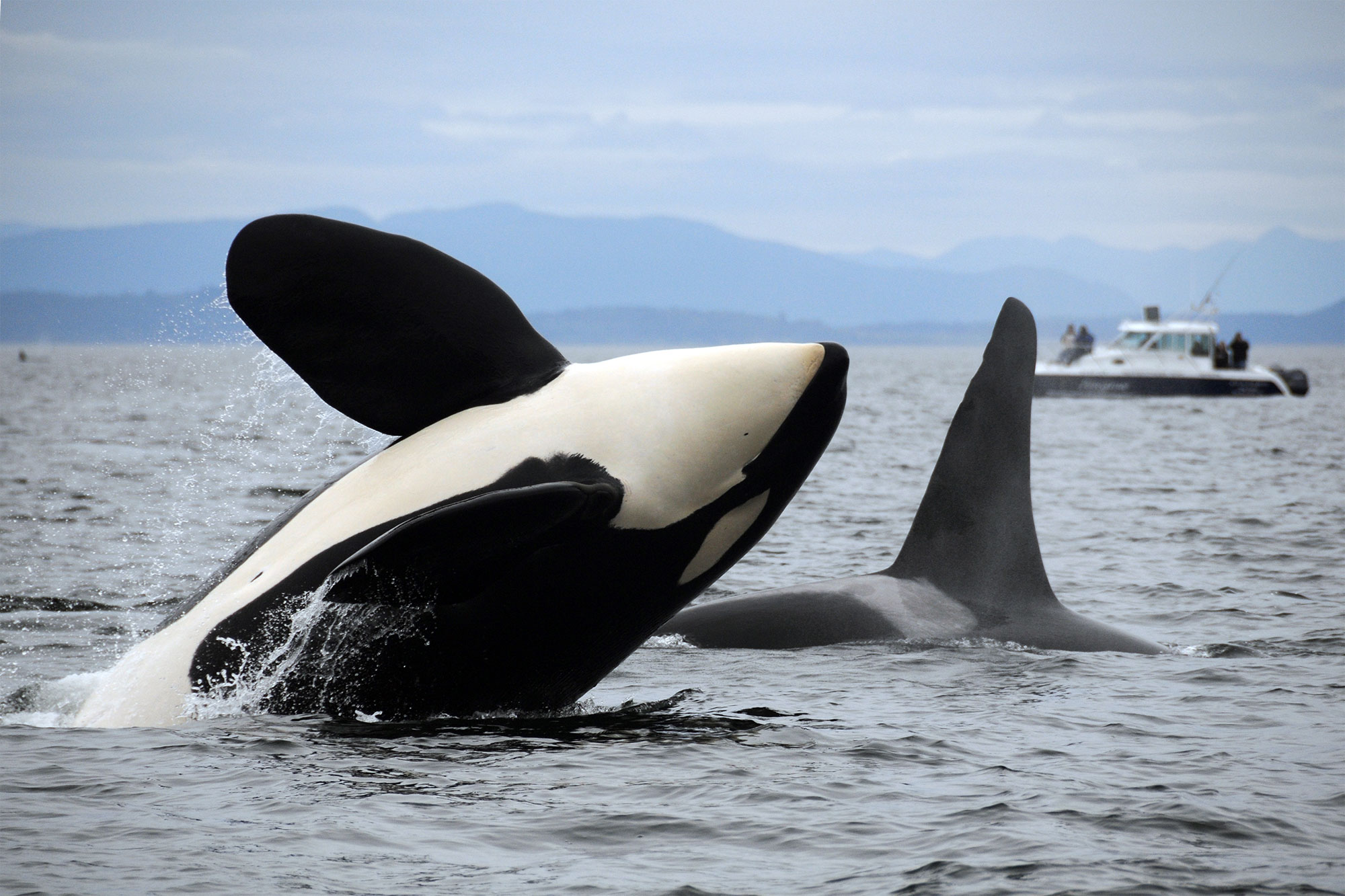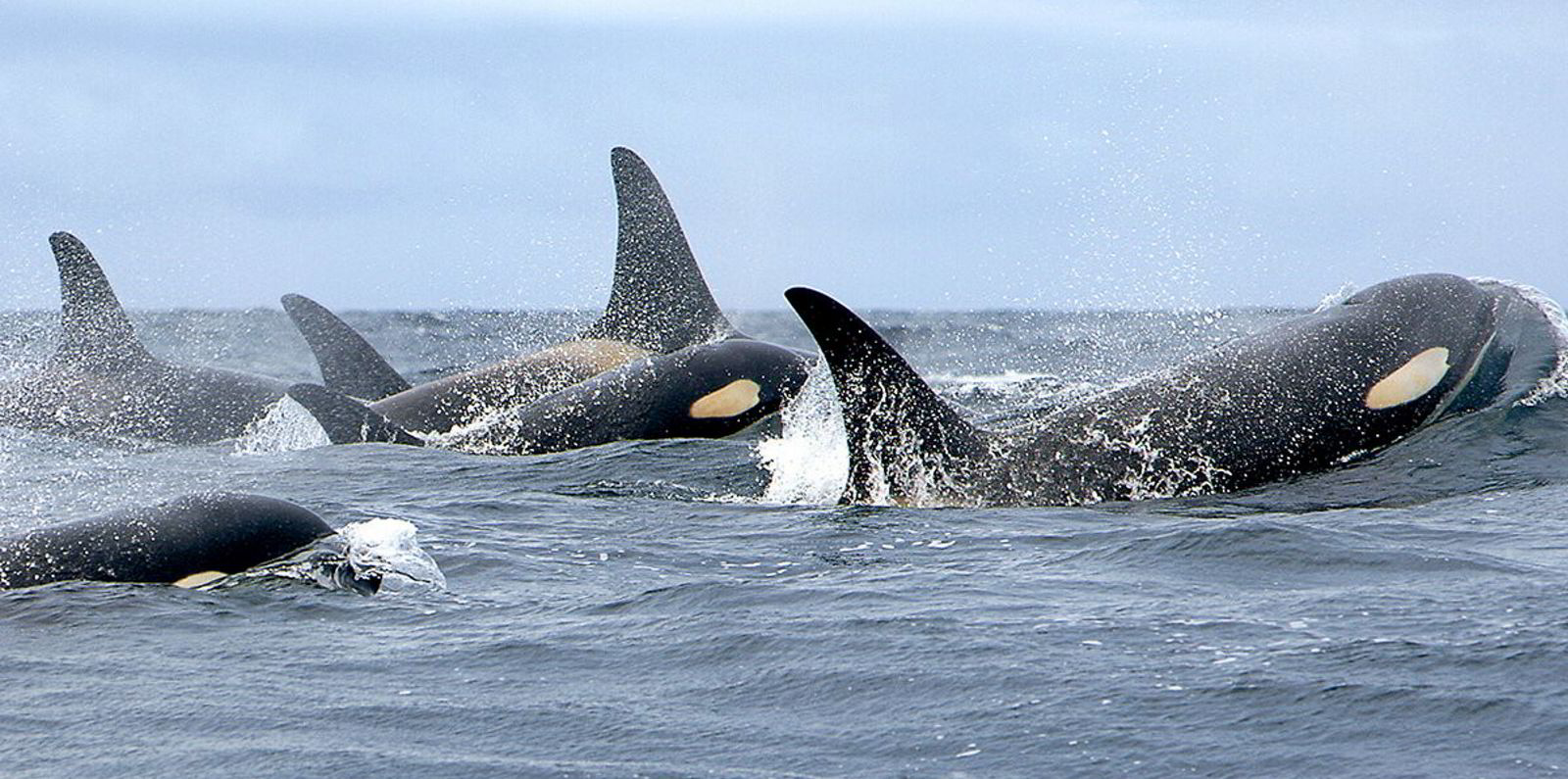
In an effort to help the endangered southern residence killer whale recover in numbers, commercial ships trading to Vancouver, Canada, Seattle, US, and other ports in the Salish Sea area are encouraged to slow down when crossing the defined seasonal critical whale habitats and when killer whales have been spotted near their planned route.
The Salish Sea area, a marginal sea of the Pacific Ocean between the Canadian province of British Colombia and the US State of Washington, is home to a unique population of whales: the Southern Residence killer whale. With between only 70 and 75 individuals remaining in the population, the killer whale is listed as an endangered species both in Canada and the US. The governments of both countries have put in place measures to reduce the acoustic and physical disturbance caused by marine vessels to the whale population. This is because noise in particular interferes with the whale’s ability to hunt, navigate and communicate via echolocation.
The measures, which include vessels having to keep a certain distance, interim sanctuary zones, area-based fishery closures and seasonal slowdown areas, apply in principle to all vessels regardless of their size and method of propulsion. However, as large commercial ships in transit, and those following a Traffic Separation Scheme (TSS) or complying with a Vessel Traffic Service (VTS) measure of direction, are generally exempted from the stated requirements, the measures may predominantly have an impact on smaller vessels and boats operating in the area. Exemptions are also made for ships in distress and ship operations necessary to avoid an imminent and serious threat to a person, ship or the environment. Nevertheless, we encourage all ship operators and masters trading to ports in the Salish Sea area to familiarise themselves with the measures, the periods of their application and exemptions available for vessels and/or people.
- Canadian requirements: Transport Canada’s Ship Safety Bulletin No. 15/2022 on the protection of the killer whale (Orcinus orca) in the waters of Southern British Columbia.
- US requirements: Code of Federal Regulations Title 50 Subchapter C on Marine Mammals. NOAA Fisheries’ resource page on the endangered killer whale may also be useful in this respect.
Voluntary slow down programs for commercial ships
Ship masters should also take note of the voluntary programs aiming to diminish noise impacts from large commercial ships on the Southern Residence killer whales in the Salish Sea area, that is, the:
- Quiet Sound program in the US, and
- Enhancing Cetacean Habitat and Observation (ECHO) program in Canada.
Under these programs, commercial ships transiting the inbound and outbound shipping lanes in the Salish Sea area are asked to use the programs’ whale report alert systems and, when whale sightings are reported, take measures that are safe for humans and for the whales, such as slowing down, stopping, posting a lookout, etc. Under the Canadian ECHO program, three seasonal critical whale habitats in which ships encouraged to slow down from June to October/November, have been identified and described in detail. At the time of writing, Quiet Sound is exploring the possibility of a voluntary, seasonal slowdown area trial in Washington State waters.
We also take this opportunity to remind Masters and crews operating along the US/Canadian East Coast to maintain a good lookout for another endangered species, the North Atlantic right whale, and follow the mandatory reporting requirements and speed restrictions in force at any given times.










